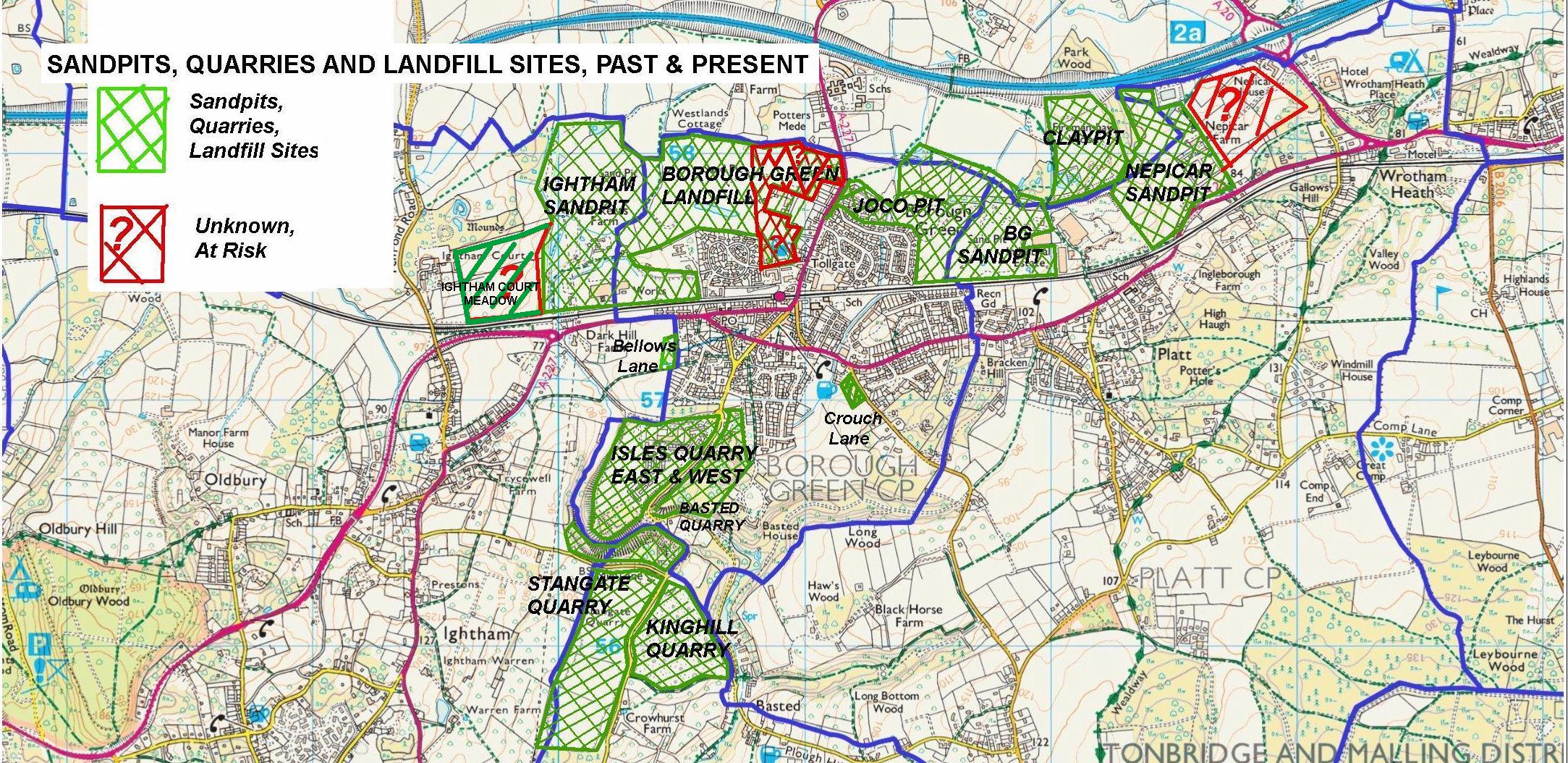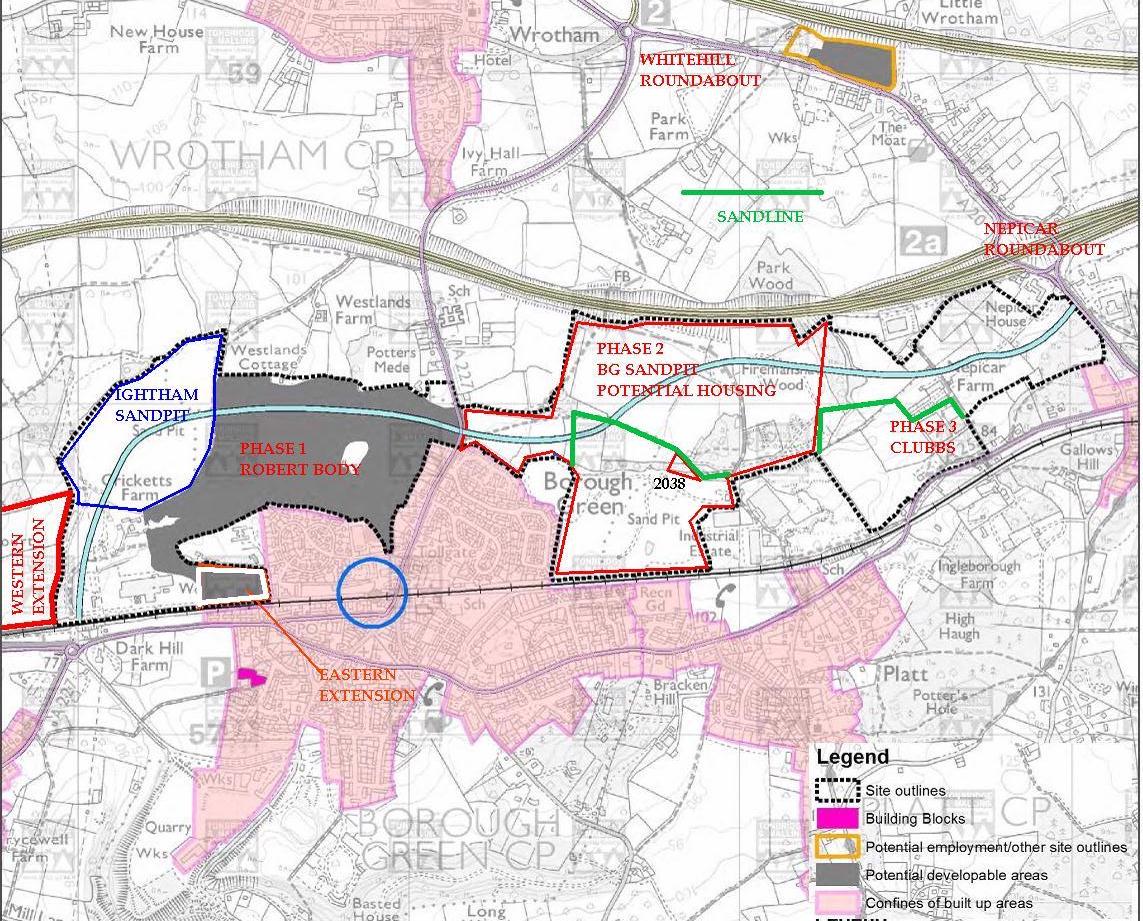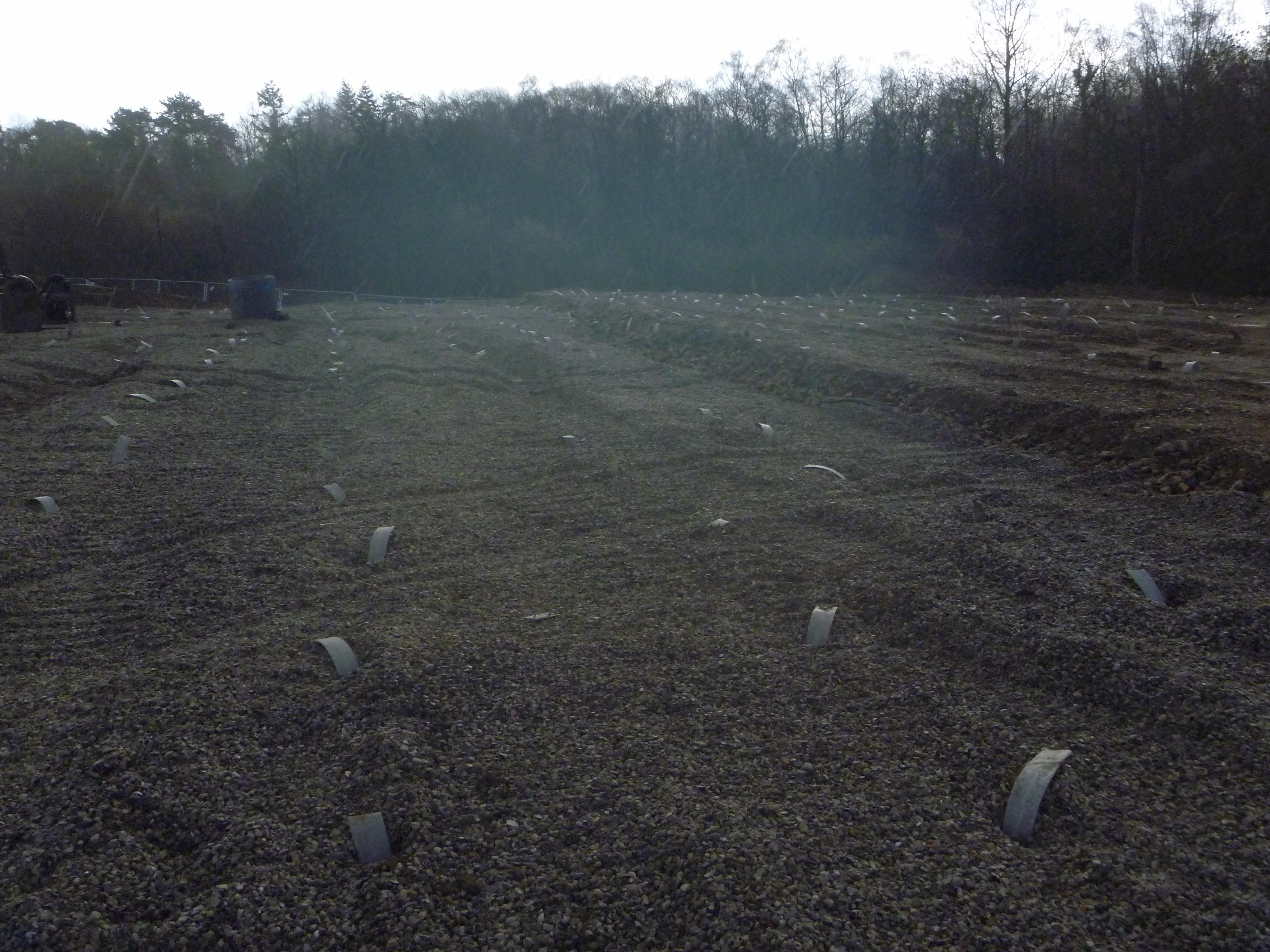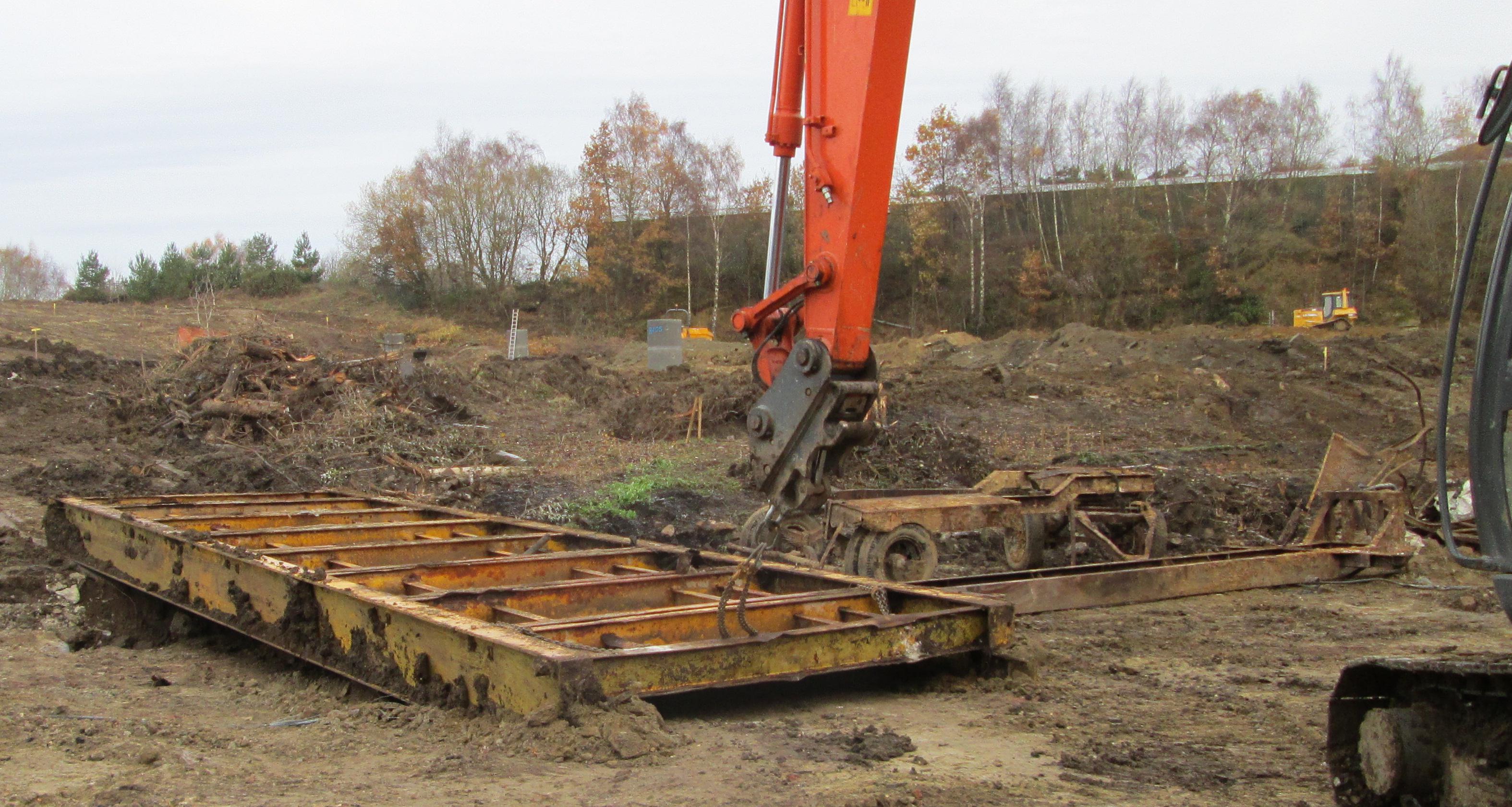LANDFILL SITES IN BOROUGH GREEN
LANDFILL HAZARDS
Borough Green is surrounded by Landfill sites, the remains of past mineral excavations. TMBC in their thirst for ever more houses, are viewing these sites with relish, seeing them as "despoiled land" and Brownfield sites. They are not, everyone of these sites is approved in Greenbelt because the expectation is they will be reinstated and returned to agricultural Greenbelt. (FULLSIZE LANDFILL MAP)
(FULLSIZE LANDFILL MAP)
If a landfill has been filled with inert, non-putrescible waste, compacted in thin layers, it is called "Engineered Landfill" and stands an excellent chance of providing a stable platform for housing.
If it is a historic general waste site, it is unlikely to have any compaction except for natural settlement, and will contain voids, perched pockets of water and other liquids, solid materials such as old truck bodies with voids underneath, but crucially pockets of putrescible organic matter. (Fig 3 Below)
TMBC have already built on Joco Pit, and is having to take action about raised Methane Levels. Isles Quarry had significant methane levels, but was built without any monitoring, as was A-Z. And yet they want to build on 3 more historic landfill sites

(BGGC MAP) (LOCAL LANDFILL SITES DETAIL)
LANDFILL SITES Isles Quarry West Hazelbourne, Joco Pit Houses A-Z Houses,
METHANE and other landfill gases can occasionally have a mineral source, but are largely the result of rotting organic waste. Methane itself is not a problem except when enclosed in a confined space, where at concentrations between 1% and 25% it is explosive. In landfills such as Stangate and Kinghill with deliberately large amounts of domestic putrescible waste that are suitably capped and enclosed, it can become a valuable resource fuelling diesel engines to produce electricity.
PILING hammers concrete pillars into loose landfill down to the bedrock to support houses, and prevent damage by subsidence. (FIG 4 below)
VERTICAL BAND DRAINS are drilled into loose landfills to release trapped air and moisture (Fig1 below). Once band drains are installed, hundreds of tonnes of spoil are heaped onto the area, a process called "surcharging". The theory is that the imposed weight compresses the soil and and squeezes out the trapped moisture and air, closing voids, and compacting soil grains closer, achieving compaction without actually mechanically compacting the ground. That is the Theory anyway, no-one has ever been down to investigate. I accept that it is successful where earth bunds and banks are built and stabilised, but I have my doubts that it works on the unknown and unknowable material in a landfill. I watched a Crest Piledriver one day, as it battered a pile into the ground, 3-4" at a time, when it suddenly dropped 6-7 feet ! I bet that’s not supposed to happen
Even the Council's Environmental Consultants admit this method can only compact the top 3-4 metres.
PROBLEMS OF PILING AND BAND DRAINS. In a stable untouched landfill these pockets of air water and organic material can sit quietly for decades. TMBC know that things can shift naturally, exposing new material that rots producing a spike in Methane as at Joco. They even say that piling and band drains assist the dissipation of methane - clearly a good thing.
But if piling and band drains allow methane to escape, they can also allow oxygen to get into the landfill, triggering more methane generation, more rot, more voids. If Band drains allow moisture to travel down and out of the landfill, they also create a path for surface runoff water to get into the landfill, perhaps leading to:…… (Piling Rig at IQW Fig 4)
SUBSIDENCE AND SINKHOLES
The escape of methane, and the ingress of water and oxygen, triggers more rot and more voids, exposing new areas to rot. The flow of water through these voids can lead to erosion and subsidence. Subsidence is not a problem to the houses, they are all safe on their pilings. But what about roads, footpaths, sewers , gaspipes, conservatories and even garden sheds.
There is another hazard to be born in mind here, and that is sinkholes. Sinkholes occur when surface water finds pathways through the ground, and slowly leaches away subsoil, increasing voids. Sometimes those voids collapse leaving a hole on the surface, as they did on the crossroads in the 70s, and at Hillview a few years ago.
There are several types of strata that make sinkholes likely, according to the British Geological Society, gypsum, chalk, rocksalt and limestone. The rock under Borough Green is actually quite a hard limestone, but in fractured beds, hundreds of cracks, and it is only 35-50% limestone, the rest is hassock, a loose friable limestone that you can almost crush in your hand, easily eroded. (BG Limestone Fig 2)
I am not saying we are all at risk of falling down caverns at every step, but it is clear that landfills and limestone make Borough Green a much higher risk than other places, so why take the risk? (more about SINKHOLES)
Below FIG 1 Vertical Band Drains at Isles Quarry West

FIG 2 Borough Green Limestone showing intense fissuring

FIG 3 OLD IRON excavated from the surface few feet at Isles Quarry - weighbridge platform, HGV trailer and ???

FIG 4 Piling rig
